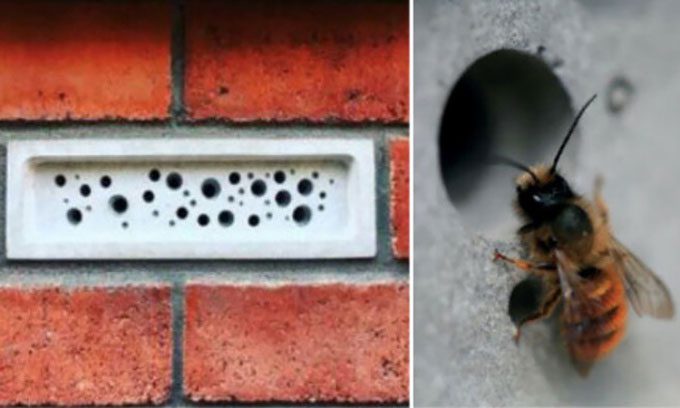British scientists have utilized recycled materials to create a type of brick with 18 holes, providing nesting sites for solitary pollinating bees.
Bees are crucial for natural ecosystems and human agriculture. However, bee populations are declining due to habitat loss and climate change, alongside increasing human reliance on pesticides in food production. Conservation efforts for bees are often hindered by construction activities.

Holey bricks can make buildings more bee-friendly. (Photo: International Journal of Sustainable Design).
In a recent study published in the International Journal of Sustainable Design, British scientists introduced the design of bee bricks – materials that can be used for constructing new buildings or replacing some bricks in older structures. Bee bricks provide habitats for solitary bees, which are far more common pollinators than the well-known honeybee, as reported by Phys on January 28.
According to experts Kate Christman and Laura Hodsdon from Falmouth University, and Rosalind Shaw from Exeter University, there are approximately 250 species of bees in the UK. Among these, 9 out of 10 species are solitary bees that do not gather with others to build a hive. About 1 in 20 solitary bees nest in cavities.
Creating suitable habitats for them should be a focus for the construction industry, and the solution of using bricks with appropriately arranged holes for building can be easily implemented. Bee bricks also require no continuous maintenance. Bees will discover these bricks and nest in them without posing any threat to the residents inside.
The design from the research team needs to be sturdy enough to replace a standard building brick. Additionally, bee bricks are low-cost and made from recycled materials. The abundant waste kaolin clay mineral in Cornwall was chosen as the primary material. They also added a bit of granite aggregate and cement as a binder. Each bee brick has 18 holes and can come in various colors to suit different construction projects.
“Bee bricks provide nesting sites for solitary bees, helping to change the perception of how current building materials are used. Made from locally sourced recycled materials, bee bricks serve a dual purpose as construction materials while promoting biodiversity,” the research team explained.


















































